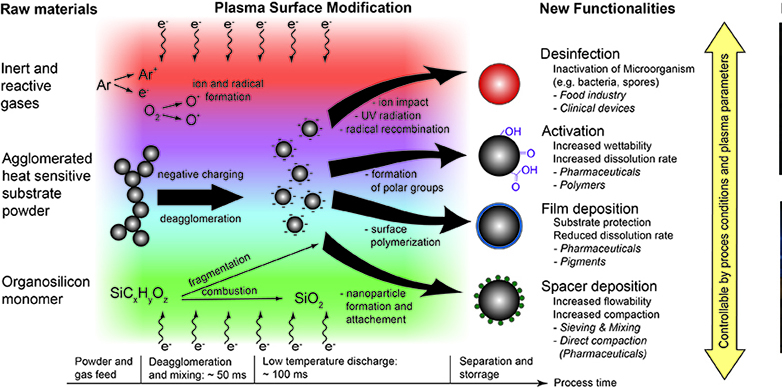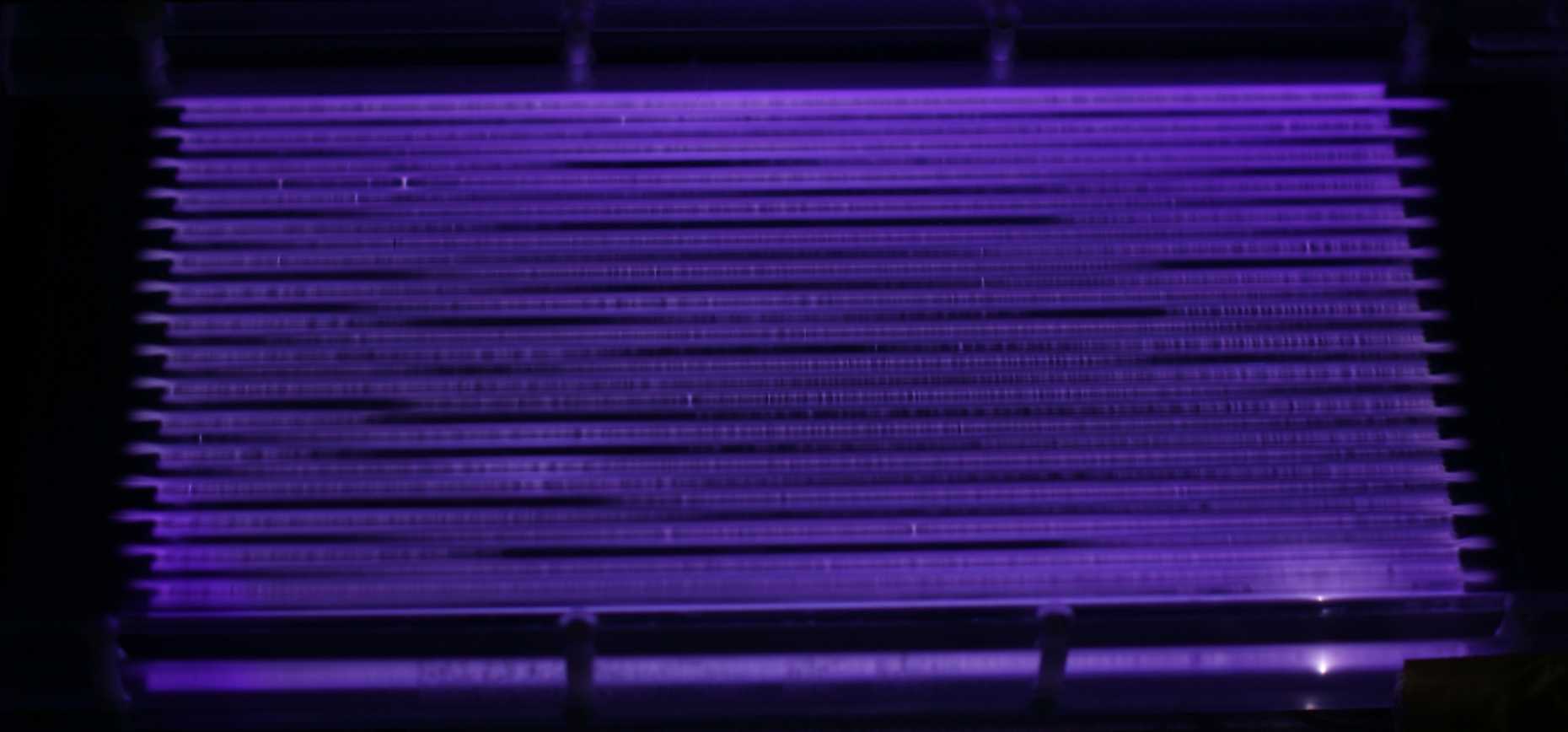Plasma Processes
Plasma is an ionized gas containing neutral gas species (e.g. atoms, molecules) as well as charged particles like electrons and ions. In non-thermal plasmas, which are applied and investigated in our laboratories, the overall gas temperature stays at a low level, whereas electrons gain considerable energies and thus are able to induce different reactions (e.g. dissociation of molecules, excitation and ionization of gas species). Various gas species and emitted (UV) radiation modify the surface properties of substrates exposed to the plasma. The type of surface modification achieved during the plasma treatment depends on different process and plasma parameters like for instance gas composition and pressure applied during the process.
Our research in this domain focuses on the surface modification of fine powders and granular materials. Plasma processes enable to activate the surface of fine powders by introducing polar groups and thus increasing the wettability of the powder surface. Simultaneous production and deposition of nanoparticles or films on the powder surface is possible by adding metal-organic precursors to the plasma. Deposited nanoparticles act as spacers between the substrate particles and improve the powder flowability, while coherent films can enclose the particles and thereby reduce diffusion or dissolution processes. Plasma processes can also be used to inactivate microorganisms. Our group focuses here on the reduction of spores and bacteria on food products.
We design various low-pressure and atmospheric-pressure plasma reactors for the surface treatment of bulk solids. To assure a homogenous surface modification, particular attention is paid to the continuous and smooth transport of particles through the plasma treatment region. Plasma diagnostic methods and sophisticated surface analytical tools are used to characterize and further improve the developed plasma processes.
Current projects focus on:
- improvement of lithium-ion batteries by the deposition of material onto the surface of fine-grained graphite powder
- deposition of diffusion-barrier films onto fluorescent powders to increase the lifetime of light emitting diodes
- wettability improvement of polymer powders in a reactor operated at atmospheric-pressure
- inactivation of spores on wheat grains
Keywords:
plasma surface treatment, plasma enhanced chemical vapor deposition, surface modification of powders, wettability, flowability, nanoparticles, inactivation of microorganisms, dielectric barrier discharge, low pressure plasma

